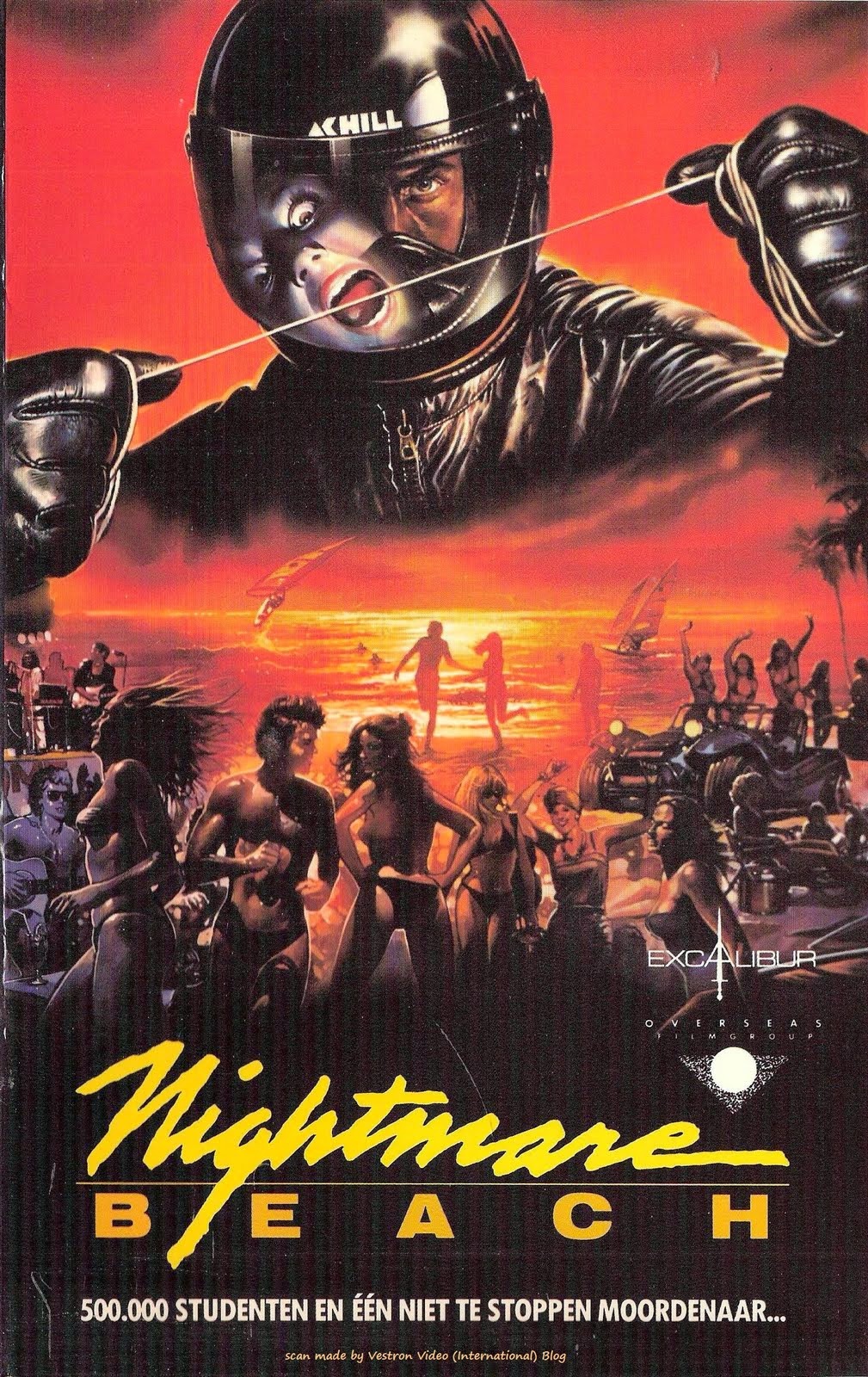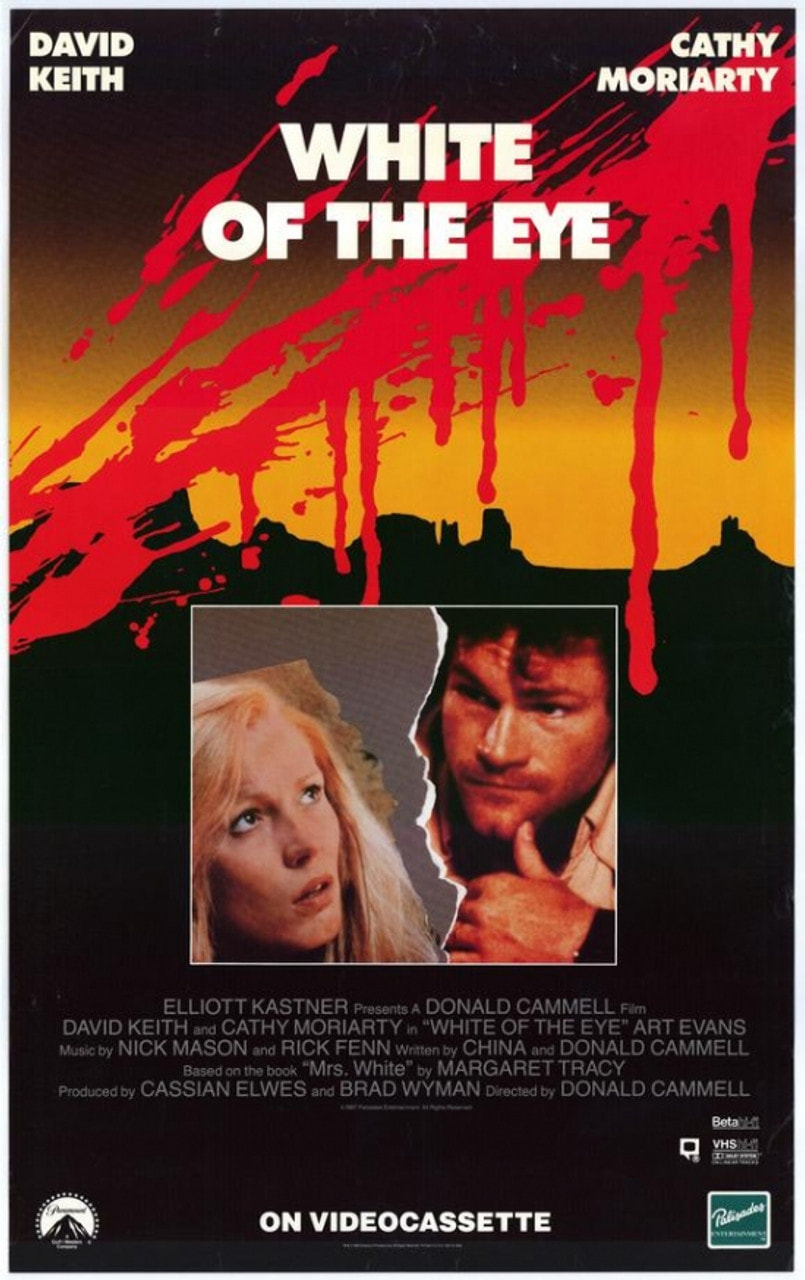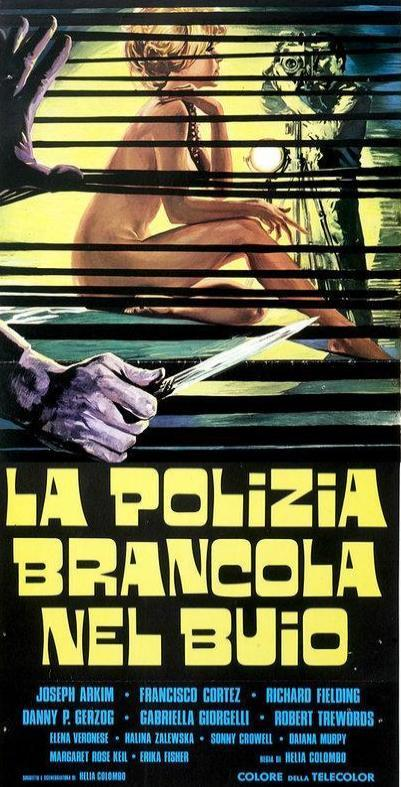The middle-aged leader of the youth motorcycle gang The Demons is sent to the electric chair for a crime he claims not to have committed. The execution was executed in a quaint seaside resort which hosts the annual uniquely American shenanigan-fest known as spring break. At least, somewhere adjacent to the main filming location hosts it, so the producers were able to nip over there to film some stock footage to blend into the final film. Anyway, when the next spring break rolls around the usual array of airheaded teens and twenty-somethings roll up to get wasted and roll in the hay. But not everyone's happy to host the libidinous layabouts - the local police chief (John Saxon playing the standard hardassed John Saxon cop, with a sprinkle of sexual perversion on top) and local priest disapprove of anything approaching fun. As does a mysterious leather-clad biker who shows up and starts electrocuting revellers with his specially modified motorbike. Is it Diablo, the dead gang leader? Course it's not-if you know anything about gialli you already know who it is!
This film is possibly directed by Umberto Lenzi, and possibly not directed by him - for years it was believed that he made it using the pseudonym Harry Kirkpatrick, until an interview in which he attributes direction to the film's screenwriter James Justice (who wrote the script under the Kirkpatrick alias). Roberto Curti, who's far more knowledgeable about these things than me, says that Lenzi made it, and my opinion is that he's probably right. It's a long, long way from Lenzi's earlier gialli and poliziotteschi, but so was all of his work from this era - Hitcher in the Dark and Black Demons (especially the latter) are textbook examples of the kind of low rent Filmirage-esque production (HitD actually was produced by that company) which proliferated in the late 80s; specifically, Italian films shot in America which captured enough local flavour to be sorta-convincing as American productions. The drawback of this shift in setting was that the films lost some of their uniquely Italianate edge - those wacky quirks which marked their fare apart from, and more enjoyable than, standard US exploitation films. The Filmirage-type productions actively tried to pass for lower tier American product, which probably helped international sales, but cost the films something of their souls. (I should say now that I actually like a lot of Filmirage films, several of which did retain just enough of their Italian qualities to stand out - I merely refer to them here as a yardstick because they proliferated to such a degree). But, to bring my ramblings back around to this film, even though we're a long way from Seven Blood-Stained Orchids here, I do think the same man's hand (directing hand) is responsible for both.
The film probably wouldn't be considered a giallo without the Italian involvement (although the identity of the killer - which I won't be getting into here because it had very much Been Done by this point, and I have written about the trope before - does provide another link), and it's pretty much an attempt to capitalise on the fag end of the slasher trend; gialli not being exactly hot box office fare in the late 80s. Killing young people through electricity isn't very gialloey either (although Wes Craven may have liked the idea, as Shocker, made the following year, isn't dissimilar to this film in its set-up).
The cast are largely young and expendable, and there's no attempt at any real investigation into the killer's identity. This is somewhat of a surprise, given the prevalence of the police in the film, as well as the manner in which de facto leading man Skip is run out of town by John Saxon, with a threat that he'll be framed for the murders if he returns ringing in his ears. He does return, but rather than conduct anything approaching a logical investigation, he merely sends his new girlfriend out on her tiny moped, hoping to lure the killer into attacking her (he's not following at a discreet distance ready to intervene or anything, that would be too intelligent an idea for a spring breaker).
Skip is probably the least annoying of the young male cast, and it says a lot when you're saying that about a character with whom we're meant to sympathise just because he threw an interception in the Rose Bowl. This is classic Italians-in-America filmmaking: throw in some classic American references to uniquely yankly products like the Rose Bowl, and no-one could possibly question the provenance of the film. And if the shoehorned-in reference tugs on the audience's heartstrings, so much the better. Skip mopes into town and quickly catches the eye of local barmaid Gail, who mopes to and from work at walking pace on her little motorbike. She's also the sister of the girl who Diablo murdered (allegedly), which is pretty useful for narrative purposes. Gail and Skip bond as they investigate the disappearance of his homosexual friend, Ronny, who's also, bafflingly, the self-appointed leader of a 'beaver scouting patrol', bless him. He's fallen afoul of the Demons, now led by Diablo's homosexual brother, who strangely has a different ethnicity and accent. His accent (stilted and Hispanic) is actually almost the exact same as his new lady's, and she is literally the exact same as his brother's old lady.
As already stated, Skip and Gail don't really drive the narrative at all (if they do, it's at walking pace), and the film just bounces along from set piece to set piece, including some footage shot at a Playboy wet t-shirt competition. There are fairly chunky and clunky comedic elements, with the Porkies-style films obviously being another influence. And speaking of films being influences, who could forget Jaws, which lends a mayor-trying-to-keep-a-lid-on-an-escalating-crisis subplot (Mayor Loomis in this case, in another horror film reference), as well as the scene in which an utterly hilarious banterhound pretends to be a shark (check out the police dude's reaction - shoot now, deal with animal rights activists later).
The chasm between the acting ability of the young and old(er) players is so great as to be almost confusing; one feels that Michael Parks's perma-grimace is an unvarnished reaction to the efforts of his co-stars. The murder scenes are OK, and feature some decent burn make-up and some less successful shots of mannequins' heads on fire. The killer's appearances (as well as those of a mute weirdo cop) are accompanied by a heavy metal-lite track, showing Umberto had been paying attention to the 80s sonic swerve taken by his old pal Dario Argento (or else James Justice had been paying attention, which is actually probably as likely). The up-tempo riff-monstering can only do so much to make things exciting, though, especially in any scene involving Gail's moped.
I suppose I'll briefly touch on the motivation offered up by the killer - the usual 'I'm eliminating sin by sinning' nonsense. The killer is affronted by the raw sexuality and carnality of spring break (but, obviously, simultaneously obsessed with it). In much the same way, this film made by a group of middle-aged Italians doesn't know quite what to make of its young subjects - it's willing to depict them having fun, often with their baps out, but you get the feeling that there's a school of thought that they may be having just a leetle too much fun on occasion. That particular school is out for Easter, though, so the filmmakers do bravely depict plenty of immorality.
*Take a wild guess when the third time, after which this review was written, was...



 RSS Feed
RSS Feed
